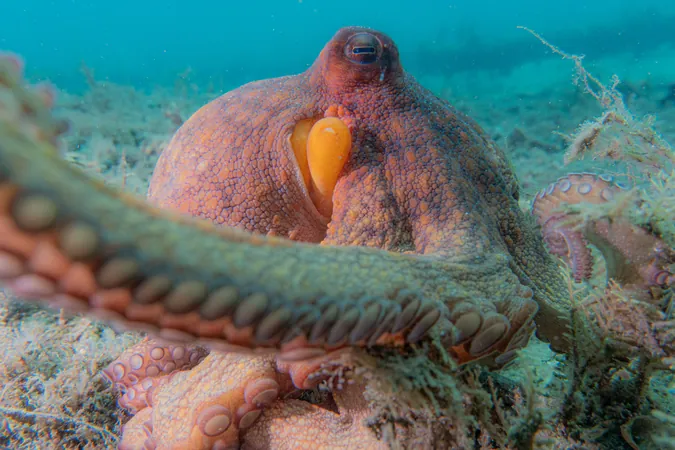
Discover the Amazing Flexibility of Octopus Arms: Insights for Future Robotics!
2025-09-13
Author: Mei
Unlocking Nature's Secrets: The Flexibility of Octopus Arms
Octopus arms are among the most agile structures in nature, and their remarkable flexibility has captured the attention of robotics researchers. With ambitions to mimic these extraordinary appendages, scientists envision soft, nimble robotic limbs capable of navigating tight spaces and performing life-saving tasks, like delivering food and water to those trapped in disaster zones.
Groundbreaking Study Reveals New Insights
In a game-changing study, researchers from the Marine Biological Laboratory (MBL) and Florida Atlantic University (FAU) have published the most comprehensive catalog of octopus arm movements ever recorded. By video documenting 25 different octopuses across six diverse locations in the Atlantic, Caribbean, and Spain, the team meticulously detailed the relationship between arm movements and behaviors such as foraging and locomotion, with findings featured in the journal "Scientific Reports."
A Tactile Wonder: How Octopuses Navigate Their World
Octopuses rely more on their arm suckers, laden with sensory organs, than their eyesight to navigate their environment. MBL Senior Scientist Roger Hanlon emphasizes, "The octopus is a very tactile animal—it's more tactile than visual." Their impressive camouflage skills, allowing them to change color and texture, further complicate observations in their natural habitats.
Field Research: A Dive into the World of Octopuses
To conduct their research, divers like Hanlon and FAU research fellow Chelsea Bennice first identified octopus habitats—characteristically messy, revealing their presence through leftover food debris—before observing the intriguing creatures over multiple days. Remarkably, these elusive creatures spend around 80% of their time in dens, emerging only occasionally to forage.
Decoding Arm Movements: A New Behavioral Lexicon
The research team expertly analyzed hours of footage to catalog every motion of the octopuses' eight arms, breaking down movements into three distinct sections. For the first time, they documented 12 different types of arm movements, illuminating the advanced capabilities of octopuses.
Diverse Functions of Octopus Arms Uncovered
The study revealed that while octopus arms can perform a plethora of motions, certain actions depend on different arm segments. For example, elongation and shortening are prominent at the base, while bending primarily occurs at the tips. From 'walking' across the seabed to delicately manipulating objects, octopus arms are not just flexible but multifunctional.
A Limber Future: Robotics Inspired by Nature
With approximately 100 suckers on each arm acting as sensory marvels, Hanlon likens them to the combined capabilities of a human nose, lips, and tongue. This incredible flexibility raises exciting questions for robotics: "After a disaster, how do you deliver a drug or a phone or water to someone trapped beneath rubble?" he asks. The need for a flexible robotic arm capable of navigating complex environments is more pressing than ever.


 Brasil (PT)
Brasil (PT)
 Canada (EN)
Canada (EN)
 Chile (ES)
Chile (ES)
 Česko (CS)
Česko (CS)
 대한민국 (KO)
대한민국 (KO)
 España (ES)
España (ES)
 France (FR)
France (FR)
 Hong Kong (EN)
Hong Kong (EN)
 Italia (IT)
Italia (IT)
 日本 (JA)
日本 (JA)
 Magyarország (HU)
Magyarország (HU)
 Norge (NO)
Norge (NO)
 Polska (PL)
Polska (PL)
 Schweiz (DE)
Schweiz (DE)
 Singapore (EN)
Singapore (EN)
 Sverige (SV)
Sverige (SV)
 Suomi (FI)
Suomi (FI)
 Türkiye (TR)
Türkiye (TR)
 الإمارات العربية المتحدة (AR)
الإمارات العربية المتحدة (AR)